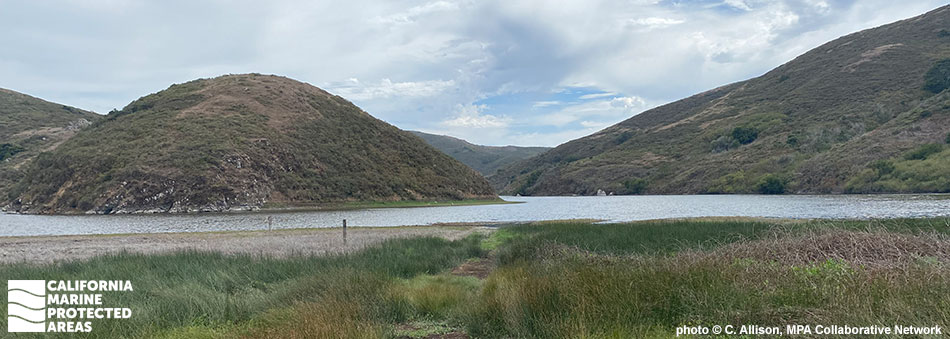
Overview
Located on the border between Marin County and Sonoma County, Estero Americano State Marine Recreational Management Area (SMRMA) protects the western portion of Estero Americano Estuary and the adjacent shoreline. Though it is a relatively small Marine Managed Area (MMA), encompassing only about a tenth of a square mile and reaching a maximum depth of about 10 feet, a wide range of key habitats flourish in this environment. The estuary and tidal creek habitats contain beds of eelgrass, an important underwater plant that helps filter the water and provides food and habitat to many species.
Depending on the year and season, a sandbar may be present at the mouth of the estuary. Species that inhabit this MMA and benefit from its protection include striped bass, starry flounder, ghost shrimp, mud shrimp, brackish water clams, gobies, and a variety of seabirds. Sandy and rocky beach habitat are found where the estuary meets the Pacific Ocean. Because surrounding lands are privately owned, Estero Americano SMRMA is not easily accessible by foot or car. The best way for the public to access the SMRMA is through events regularly hosted by the Sonoma Land Trust, but it is also feasible to reach the SMRMA by boat or kayak.
Regulations
It is unlawful to injure, damage, take, or possess any living, geological, or cultural marine resource, EXCEPT: Take of waterfowl in accordance with general waterfowl regulations is allowed.
California Code of Regulations Title 14, Section 632(b)(41)
Quick Facts
MPA size: 0.13 square miles
Shoreline span: 1.2 miles
Depth range: 0 to 10 feet
Habitat composition*:
- Estuary: 0.12 square miles
- Eelgrass: 0.01 square miles
- Coastal marsh: 0.03 square miles
*Habitat calculations are based on three-dimensional area and may exceed the total MPA area listed above.